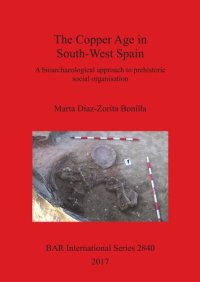
Ebook: The Copper Age in South-West Spain: A bioarchaeological approach to prehistoric social organisation
Author: Marta Díaz-Zorita Bonilla
- Series: BAR British Archaeological Reports International Series 2840
- Year: 2017
- Publisher: British Archaeological Reports Oxford Ltd
- Edition: Illustrated
- Language: English
- pdf
The prehistoric communities in Iberia have never been investigated before using a cutting-edge and multidisciplinary approach. In this research, the latest techniques are applied in order to allow a reconstruction of prehistoric social structure and social organization. Specifically, this investigation uses bioarchaeological methods, such as osteological, paleopathological and biochemical approaches (stable isotopes), in combination with funerary context to reconstruct the mortality, morbidity, dietary and mobility patterns of two human skeletal populations from the Copper Age (c. 3300-2100 cal BC). The main objective was to test whether social differences were already present during the 3rd millennium BC in southern Iberia. For this purpose, two main Copper Age sites, Valencina de la Concepción (Seville) and La Pijotilla (Badajoz), were analysed and then compared to many other contemporary sites from the same geographical location. In sum, the results of this research demonstrate the complexity of the funerary patterns in the Iberian Copper Age, providing evidence for social inequality and differentiation.